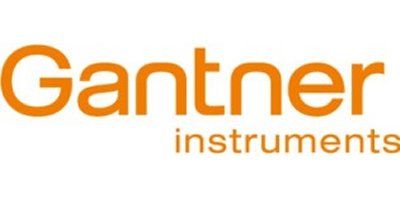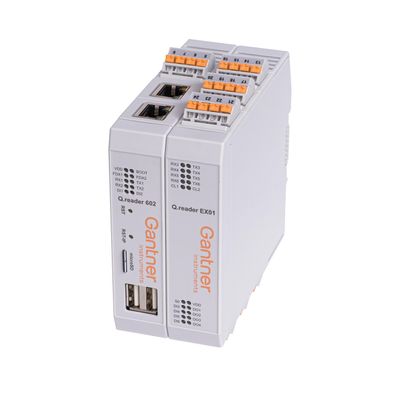

- Home
- Companies
- Gantner Instruments Environment ...
- Products
- Gantner Q.reader - Model DAQ PPC 602 - ...

Gantner Q.reader - Model DAQ PPC 602 - Data Logger and Power Plant Controller
The Q.reader offers reliable and flexible solutions for the data logging and power plant control "PPC" of utility scale and industrial and commercial (I&C) PV power plants.
- Multi feeder, distribution point support
- Absolute production constraint
- Power gradient constrain
- Voltage and Frequency Control
- Active / Reactive /PF Power Control
- Power Factor Control
- Frequency Control
- Zero feed IN
- Self consumption optimization
- Battery Control “BESS”
- Data logging
- Browser based HMI
- Remote configuration by Gantner.RAS
- VDE-AR-N 4110, 4120, 4130
The Data Logger can record several thousand data channels with a resolution of up to one second. With functions like voltage regulation, reactive or active power control, and control of power factor at the grid connection point all Distributed Network Operator (DNO) requirements are provide to maximize grid stability. The real time Linux based Q.reader has multiple input and outputs for the signal connections. The module concept allows flexible upgrade of the number of inputs and outputs. The Gantner Instruments Plant Controller provides all functionality for the Smart Grid for today and tomorrow.
All power generation plants that feed into the German medium or high-voltage grid need to use a certified power plant controller. In 2020 Gantner received the certification for grid-compliant feed-in according to VDE-AR-N 4110 and 4120 for its Q.reader PPC. The PPC’s task is to comply with the setpoints and default procedures required by the grid operator for the system at the grid connection point and to control active and reactive power. Gantner’s Q.reader is based on most recent technology and intended to fulfil the new specifications for faster and more accurate provision of setpoints.
- Data Logger
Records several thousand data channels with a resolution of up to one second - Protocols
Modbus-RTU, Modbus TCP, inverter protocols, sensor protocols - Data Transfer
FTP, SFTP, FTPS Server and Client functionality - API
REST API - Simple HMI
Web browser-based visualization and control - Configuration Interface
Browser based web-frontend - Absolute production constraint
Absolute production constraint is a controlling function which serves to limit the amount of active power generated by the plant at the point of connection - Power gradient constrain
To prevent disturbances on the network, the power gradient constraint enforces a gradient at which the plant must ramp its active power to the desired set point. - Voltage Control
The voltage control function is mutually exclusive with reactive power control and power factor control and serves to regulate the voltage at the point of connection. - Reactive Power Control
Reactive power control is mutually exclusive with voltage control and power factor control and serves to regulate the reactive power at the point of connection - Power Factor Control
Power factor control is mutually exclusive with reactive power control and voltage control serving to regulate the plant at a constant power factor at the point of connection - Frequency Control
Frequency control as defined in the grid code considers both under frequency and over frequency conditions
